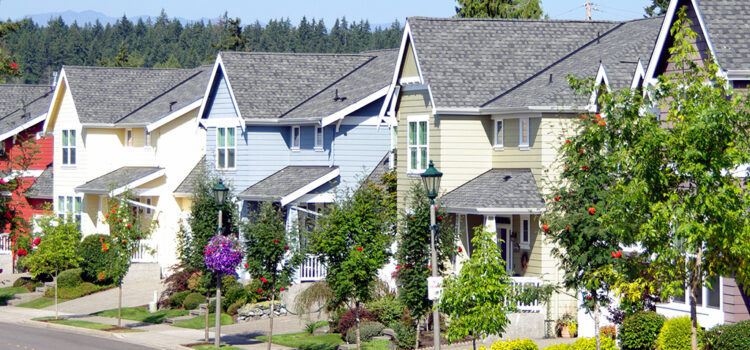

This article is an excerpt from the Shortform book guide to "The Book on Rental Property Investing" by Brandon Turner. Shortform has the world's best summaries and analyses of books you should be reading.
Like this article? Sign up for a free trial here.
Where are the best places to invest in real estate? How does a neighborhood’s class affect property value?
There are a few things to consider when choosing a rental property’s location. The Book on Rental Property Investing by Brandon Turner claims that a neighborhood’s socioeconomic features, educational options, and accessibility are important features to consider.
To figure out where you should buy your first investment property, keep reading.
Neighborhood Classes
Turner argues that when deciding the best places to invest in real estate, it’s important to consider neighborhood class. This is a rating based on the major socio-economic features of an area, along with the typical condition, age, and average prices of its properties. These factors deeply impact property values and attractiveness to desirable tenants. While there’s no formal metric for neighborhood classing, landlords generally agree on an A, B, C, and D scale. Individual buildings receive a correlating letter value based on similar criteria.
Higher-class neighborhoods (A and B) have higher employment rates, income rates, and property values, along with good infrastructure—factors attractive to tenants. Both price and demand are typically higher for properties in these neighborhoods, lowering cash flow because you have to keep rents competitive. If buying properties in the center of these neighborhoods is too costly, or rent streams don’t promise to eventually cover costs, consider buying properties in the area’s periphery, where prices often decrease.
(Shortform note: Many investors don’t mind the lower cash flow in these areas if it means a safer, quality investment in a neighborhood that has solid growth potential. For example, stable, higher-class neighborhoods often produce lower tenant turnover because your tenants are happier and feel more secure in their lodgings. This leads to shorter, less economically damaging vacancy periods for you, arguably making the reduction in cash flow worth it.)
Turner notes that lower-class properties (C and D) can be easy to add value to through forced appreciation. However, if the area suffers from neglect, economic hardship, or crime, you may find it hard to find reliable and financially stable tenants—many people aren’t willing to accept these conditions for the long-term.
(Shortform note: Financing Class C and D properties may require additional assurances for the lender. One of the most common is that you, the buyer, have more cash on hand to cover vacancy rates (the percentage of any given year that a rental unit sits without a paying tenant). These vacancies tend to be longer in lower-class neighborhoods because properties often require more repairs before they can be successfully let, or, as Turner notes, the tenants don’t stay long. Note that you may qualify for assistance from the federal government when buying in these areas. For example, in the US, the government provides a low-income housing tax credit, or LIHTC, to less affluent renters.)
| Market Classes In addition to lettered neighborhood classes, real estate markets are often subdivided into primary, secondary, and tertiary markets: Primary markets tend to be urban centers with high population density and productive industrial and commercial sectors. Secondary markets often have slightly smaller populations and economies, but they retain some of the character of primary markets. This makes them enticing to people who want some of the big city feel but with lower prices and less bustle. Tertiary markets have more dispersed populations and typically less commercial activity, but they make up for this with lower prices and a slower pace of everyday life. |
Additional Locational Draws
Aside from class, other locational features can appeal to would-be tenants, adding value to your investment. Strong educational options and nearby schools are key motivators for renting families, and most renters value good transportation and availability of common retailers. As a rule of thumb, Turner suggests you ask yourself if you’d like living where your rental property is located. Chances are your would-be tenant would react similarly.
(Shortform note: It’s unlikely that your would-be tenant will find every last neighborhood feature they’re looking for, such as great educational options and plentiful retailers, close to your property. Therefore, consider adding commonly sought-after luxuries to the unit itself. Research shows that potential renters are especially attracted to units that have washers and dryers, and they’re often willing to pay more in rent in exchange for the convenience and saving of not having to go to a laundromat. Experts suggest adding these items to your overall property if there isn’t capacity within each unit itself.)

———End of Preview———
Like what you just read? Read the rest of the world's best book summary and analysis of Brandon Turner's "The Book on Rental Property Investing" at Shortform.
Here's what you'll find in our full The Book on Rental Property Investing summary:
- An educational guide to locating, buying, and managing real estate property
- The major pitfalls new investors encounter and how to overcome them
- How to hunt down, select, finance, and purchase your first property






